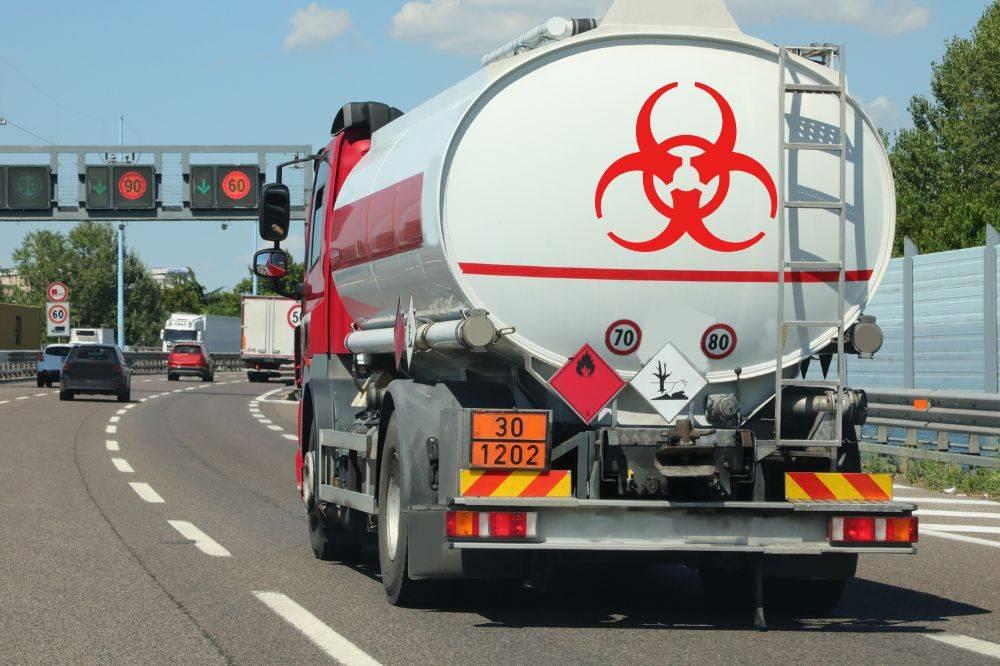Transporting hazardous materials is a complex and high-risk responsibility that demands meticulous attention to safety and compliance. One often overlooked but crucial aspect of safe hazmat transportation is securing the right insurance coverage. Without adequate protection, businesses and drivers face significant financial and legal risks in the event of accidents, spills, or regulatory violations. In this article, we’ll explore essential insurance tips designed to help companies and individuals navigate the challenges of hazmat transport with confidence, ensuring both safety and peace of mind on every journey.
Table of Contents
- Understanding Liability Coverage in Hazmat Transportation
- Risk Assessment Strategies for Comprehensive Insurance Protection
- Navigating Regulatory Requirements and Insurance Compliance
- Best Practices for Selecting and Managing Hazmat Insurance Policies
- Future Outlook
Understanding Liability Coverage in Hazmat Transportation
When transporting hazardous materials, liability coverage is not just a regulatory formality—it is a financial safeguard that protects your business from potentially devastating claims. This coverage steps in when accidents lead to property damage, bodily injury, or environmental harm caused by the hazardous materials in your possession. Without adequate liability insurance, companies might face crippling legal fees, cleanup costs, and damage awards that can threaten their operational continuity.
To ensure comprehensive protection, focus on securing policies that explicitly cover:
- Pollution Liability: This covers cleanup expenses and third-party claims arising from hazardous substance spills or releases.
- Third-Party Injury and Property Damage: Safeguards against lawsuits from individuals or businesses affected by accidents during transportation.
- Legal Defense Costs: Covers the often-high expenses associated with legal representation and court proceedings.
Properly tailored liability coverage not only protects your assets but also enhances your credibility with clients and regulatory bodies, reinforcing your commitment to safety and responsibility in hazmat transportation.
Risk Assessment Strategies for Comprehensive Insurance Protection
Understanding the potential hazards that hazardous materials pose during transportation is the cornerstone for safeguarding assets, personnel, and the environment. A meticulous risk evaluation starts with identifying all possible incident scenarios, from minor leaks to catastrophic spills. This process demands collaboration with experts who specialize in hazmat handling, ensuring that no threat—no matter how remote—is overlooked. Incorporating real-time data analytics and historical incident records enhances the precision of risk profiles, allowing companies to tailor insurance coverage that effectively mitigates their unique exposures.
Risk assessment should also encompass a thorough review of existing safety protocols and compliance with regulatory frameworks to pinpoint vulnerabilities before they manifest into costly claims. Employing a multifaceted approach, such as:
- Route analysis to identify safer transport corridors.
- Vehicle integrity audits ensuring mechanically sound equipment.
- Personnel training reviews to confirm hazard awareness and emergency response readiness.
- Contingency planning to prepare for incident management and mitigation.
These strategic assessments facilitate comprehensive insurance solutions that not only reduce financial risk but also bolster operational resilience. Ultimately, a well-structured risk assessment acts as the blueprint for securing tailored insurance protections that align seamlessly with the volatile nature of hazardous material transportation.
Navigating Regulatory Requirements and Insurance Compliance
Ensuring compliance with the complex web of regulations governing hazardous materials transportation is non-negotiable for protecting your business and the public. Insurance policies tailored specifically for hazmat carriers must reflect the rigorous standards set by agencies such as the Department of Transportation (DOT), Environmental Protection Agency (EPA), and state-level authorities. Regularly updating your insurance coverage to align with changes in legal requirements helps avoid costly fines and operational disruptions. Key areas to monitor include proper documentation, secure packaging, and driver certification, all of which insurance providers will scrutinize when assessing risk and coverage options.
- Verify that your insurance policy includes coverage for environmental cleanup costs, as hazmat incidents often entail high remediation expenses.
- Confirm adherence to federal and state mandates regarding insurance minimums, which vary depending on the type and quantity of materials transported.
- Maintain comprehensive records to demonstrate compliance during audits or claims processes.
Working closely with an insurance broker who specializes in hazardous materials can provide critical insights and customized solutions. They help navigate liability nuances, including third-party claims and property damage, ensuring your policy not only meets but exceeds industry safety thresholds. Proactive risk management paired with the right insurance gives your operation resilience in a high-stakes environment, transforming regulatory obligations into a foundation for dependable, risk-aware transportation.
Best Practices for Selecting and Managing Hazmat Insurance Policies
When navigating the complexities of hazmat insurance, it’s crucial to ensure your coverage aligns precisely with the nature and scope of the materials you transport. Evaluate policies based on hazard class specifics, the volume and frequency of shipments, and potential environmental impact. Never settle for generic insurance templates; specialized policies that understand regulatory compliance and risk assessment for hazardous materials offer the best protection. Remember, the right insurer should provide flexible terms, robust risk mitigation support, and responsive claims handling tailored to your operational realities.
Proactive management of your insurance policy hinges on consistent communication with your provider and regular policy reviews. Incorporate a checklist of critical factors for periodic assessment, including:
- Updated cargo manifests reflecting any changes in hazmat classification or quantity
- Verification of insurance limits versus current exposure risks
- Documentation of incident response protocols in alignment with policy terms
- Training records demonstrating compliance with safety standards
Staying ahead with these measures not only optimizes coverage but also mitigates costly lapses in protection, ensuring your hazardous material transportation remains secure and compliant under all conditions.
Future Outlook
Ensuring the safe transportation of hazardous materials is not just about following regulations—it’s about protecting lives, property, and the environment. By priorit the right insurance coverage and understanding the nuances of hazmat transport, companies can mitigate risks and navigate the complex landscape with confidence. Remember, thorough preparation today can prevent costly setbacks tomorrow. Stay informed, stay insured, and keep safety at the forefront of every shipment.





